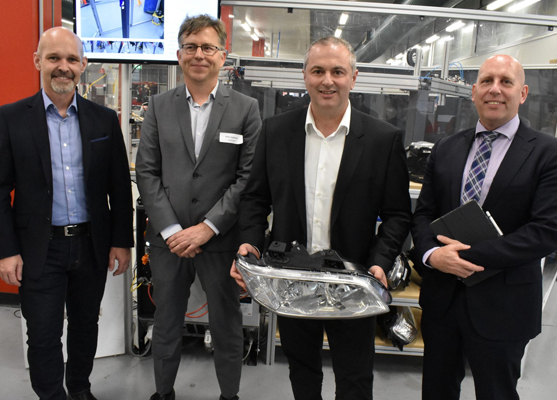Proof of concept achieved for 3D printed automotive repairs
An Australian company has achieved a proof of concept for the 3D printing, scanning, and robotic repair of headlight brackets.
Repair Bot, an outcome of a collaboration between Tradiebot, Swinburne University, and the Innovative Manufacturing Cooperative Research Centre (IMCRC), combines 3D printing and robotics to innovate the collision repair industry.
The technology works by first, scanning the existing bracket of a headlight. The damaged lug is then cut to the base of the headlight assembly. A new bracket is 3D printed, then secured to the lug.
As part of the innovation, new materials have had to be created, said Mats Isaksson, from Swinburne University.
“The team has been outstanding during this project as we overcame several significant obstacles, not the least of which was that we had to engineer our own polymer as commercial grades were unsuitable of our application,” he said.
Mario Dimovski, CEO of Plastfix, the exclusive distributor of the Repair Bot technology, noted how the technology brought together the latest in manufacturing.
“We’ve just demonstrated the best that Australian innovation can deliver, marrying material development, robotics and 3D printing, supported by some great ideas – we now have a robot that repairs headlights,” he said.
CEO of IMCRC, David Chuter, also highlighted the significance of the local innovation.
“It so amazing to see how far we’ve come since the idea was floated back in 2017. Australia is the perfect market for such innovation and this demonstration has been tremendous,” he said.

